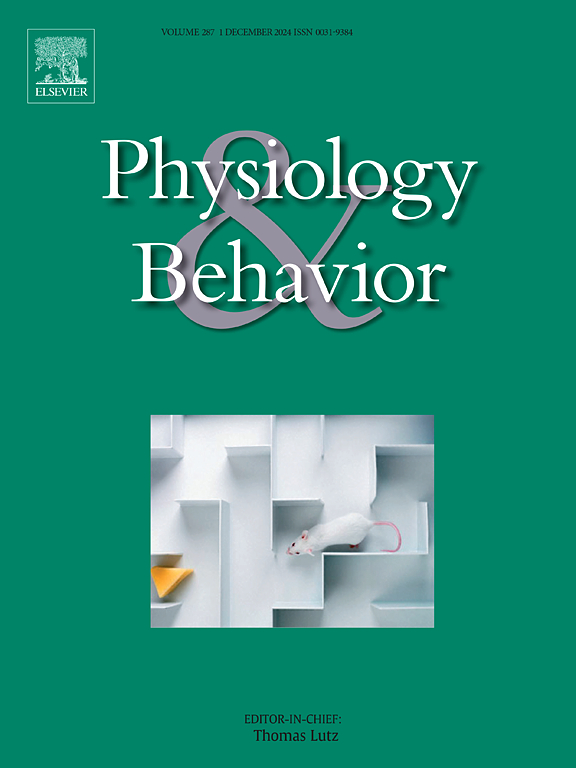BTBR小鼠对非光处理的昼夜节律反应
IF 2.5
3区 医学
Q2 BEHAVIORAL SCIENCES
引用次数: 0
摘要
BTBR T+ Itpr3tf/J小鼠(BTBR)与C57BL/6小鼠在各种昼夜节律参数上存在差异,包括自由奔跑期(FRP)、对光的昼夜节律反应以及对计划喂养的显著昼夜节律反应。昼夜节律系统对许多非光信号也很敏感,这些非光信号可以修改和重置自由运行的节奏,也可以调节对其他授时因子(如光)的反应。在这里,我们研究了BTBR小鼠对各种非光处理的反应。由于活动水平可以调节FRP,我们首先检查了BTBR小鼠较短的FRP是否源于其较高的活动水平。虽然在没有跑步轮的情况下,他们的整体活动较低,但这并没有显著改变他们的FRP。当被置于恒定光线下时,暴露于6小时的暗脉冲改善了BTBR和C57小鼠的运动节律质量。与C57BL/6J相比,BTBR小鼠在3小时睡眠剥夺程序或注射5 -羟色胺1A/7受体激动剂(±)8-OH-DPAT的正午治疗中具有显着较小的相移。然而,在剥夺食物18小时后,BTBR小鼠对中午再进食脉冲的反应更大。它们独特的昼夜节律表型,特别是它们的短FRP,使它们成为检测小鼠昼夜节律反应的有用模型。本文章由计算机程序翻译,如有差异,请以英文原文为准。
Circadian responses to non-photic treatments in BTBR mice
The BTBR T+ Itpr3tf/J mouse (BTBR) differs from C57BL/6 mice in various circadian parameters, including freerunning period (FRP), circadian responses to light, and prominent circadian responses to scheduled feeding. The circadian system is also sensitive to a host of non-photic cues, which can modify and reset freerunning rhythms as well as modulate responses to other zeitgebers such as light. Here we examine how the BTBR mouse responds to various non-photic treatments. Because activity levels can modulate the FRP, we first examined if the shorter FRP of BTBR mice resulted from their higher activity levels. While overall activity was lower when housed without a running wheel, this did not significantly alter their FRP. When housed in constant light, exposure to a 6 h dark pulse improved the quality of the locomotor rhythms for both BTBR and C57 mice. BTBR mice had significantly smaller phase shifts to midday treatments with either a 3 h sleep deprivation procedure or an injection of the serotonin 1A/7 receptor agonist (±) 8-OH-DPAT than did the comparison C57BL/6J strain. However, BTBR mice did exhibit larger responses to midday refeeding pulses following 18 h food deprivation. Their unique circadian phenotype, particularly their short FRP, makes them a useful model for examining circadian responses in mice.
求助全文
通过发布文献求助,成功后即可免费获取论文全文。
去求助
来源期刊

Physiology & Behavior
医学-行为科学
CiteScore
5.70
自引率
3.40%
发文量
274
审稿时长
47 days
期刊介绍:
Physiology & Behavior is aimed at the causal physiological mechanisms of behavior and its modulation by environmental factors. The journal invites original reports in the broad area of behavioral and cognitive neuroscience, in which at least one variable is physiological and the primary emphasis and theoretical context are behavioral. The range of subjects includes behavioral neuroendocrinology, psychoneuroimmunology, learning and memory, ingestion, social behavior, and studies related to the mechanisms of psychopathology. Contemporary reviews and theoretical articles are welcomed and the Editors invite such proposals from interested authors.
 求助内容:
求助内容: 应助结果提醒方式:
应助结果提醒方式:


